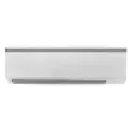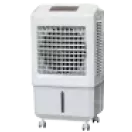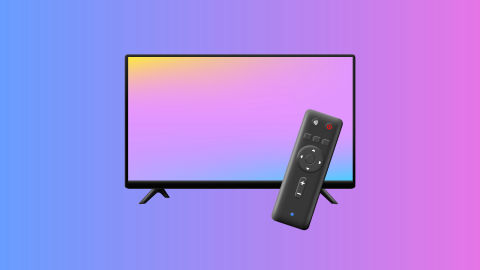Cooking technology has advanced significantly over the years, transforming how we prepare and enjoy food. From traditional wood-fired stoves to modern electric ovens, each innovation has made cooking faster, more efficient, and more convenient. Among these advancements, the microwave oven stands out as a revolutionary appliance, enabling quick heating, defrosting, and cooking with minimal effort. Its invention not only reshaped home kitchens but also influenced commercial food services worldwide. Today, brands like
Wonderchef ovens offer reliable and advanced kitchen solutions, combining technology with user-friendly designs for everyday cooking needs.
The discovery of microwave cooking: A happy accident
- Percy Spencer, an American engineer, discovered microwave cooking accidentally while working with radar technology in 1945.
- While experimenting with a magnetron, Spencer noticed a chocolate bar in his pocket had melted.
- Curious about the phenomenon, he conducted further experiments, placing popcorn kernels near the magnetron, which soon popped.
- This accidental discovery revealed that microwaves could generate heat by exciting water molecules in food.
- Early prototypes of microwave ovens were large, bulky, and primarily used in commercial settings.
- Over time, the technology was refined to create compact, affordable models for home kitchens.
- Today, microwave ovens are a staple in homes, offering convenience and efficiency.
Affordable options, such as
microwave ovens under Rs 5,000, make this technology accessible to a wide audience.
Percy Spencer: The man behind the microwave oven invention
Percy Spencer, an engineer at Raytheon Corporation, was instrumental in discovering microwave cooking technology. His background in radar systems gave him access to powerful magnetrons, which emit microwaves.
Spencer's curiosity and quick thinking led him to explore how microwaves interact with food.
After observing the chocolate bar melting incident, he experimented with other foods like popcorn and eggs. Recognising the potential of his discovery, Spencer and Raytheon developed the first commercial microwave oven, named the "Radarange." The initial models were expensive, large, and primarily used in restaurants and industrial kitchens. Over time, technological advancements made microwave ovens smaller, affordable, and suitable for home use. Today, brands like
Panasonic microwave ovens continue to honour Spencer's legacy with innovative features and reliable performance.
How microwaves work: The science behind the technology
- Microwave ovens use electromagnetic waves, specifically microwaves, to heat and cook food.
- A component called a magnetron generates these microwaves, which bounce off the oven's metal interior.
- When microwaves penetrate food, they cause water molecules to vibrate rapidly, generating heat.
- This process heats food from the inside out, ensuring quick and even cooking.
- Microwaves are non-ionising radiation, making them safe for cooking when used properly.
- The turntable inside the microwave ensures uniform heat distribution by rotating the food.
- Features like variable power levels and preset cooking modes add convenience for users.
- Understanding this technology helps users make the most of their microwave ovens.
Early developments of microwave ovens
The journey of microwave ovens began with Percy Spencer's accidental discovery in 1945. The first commercial microwave, the "Radarange," was introduced in 1947 by Raytheon Corporation. These early models were bulky, expensive, and primarily used in commercial kitchens. Standing over five feet tall and weighing hundreds of kilograms, they required significant space and power.
In the 1960s, advancements in technology and manufacturing made microwaves smaller, more affordable, and suitable for home use. The growing demand for convenience in modern households accelerated their adoption. By the 1970s, countertop microwave ovens became popular across homes worldwide, revolutionising meal preparation and reheating practices.
Today, microwave ovens are more advanced, offering features like convection cooking, grilling, and preset cooking programmes. The evolution of microwave ovens reflects not only technological progress but also a shift in modern lifestyles, where convenience and efficiency are paramount.
Bajaj Finserv offers Easy EMI options on microwaves and various other home appliances, electronics, and gadgets. Simply visit a partner store, choose your desired model, and convert the cost into Easy EMIs. Enjoy the flexibility of a convenient tenure of up to 60 months. This financing solution from Bajaj Finserv is available on 1 million products.
Explore microwave ovens on EMI with Bajaj Finserv
Browse through
Bajaj Mall and look at a variety of microwave ovens from different brands. Simply visit a Bajaj Finserv partner store after exploring the details online, and select your ideal model. With Bajaj Finserv’s financing solutions, you can purchase your preferred microwave without stressing over your budget. Flexible repayment plans let you pay in affordable instalments, ensuring a hassle-free shopping experience.
Advantages of shopping for a microwave oven with Bajaj Finserv’s financing options
- Budget-friendly pricing: Enjoy competitive prices on microwave ovens at Bajaj Finserv partner stores.
- Easy EMIs: Spread the cost of your microwave over manageable EMIs with flexible repayment tenures.
- Zero down payment: Buy select models without any upfront payment, making it easier to get started.
- Wide selection: Access a diverse range of microwave ovens across Bajaj Finserv partner outlets.
- Exclusive offers: Avail special deals, discounts, and cashback on purchases made.
- Free home delivery: Get your microwave delivered to your doorstep without any additional cost.











